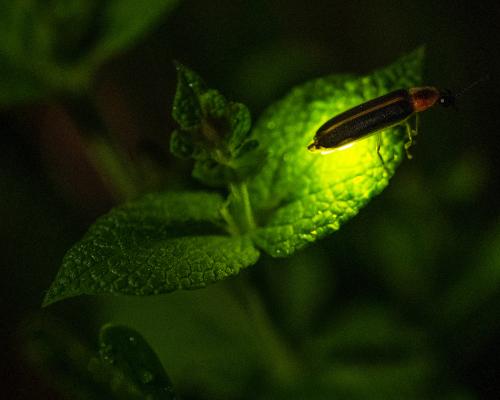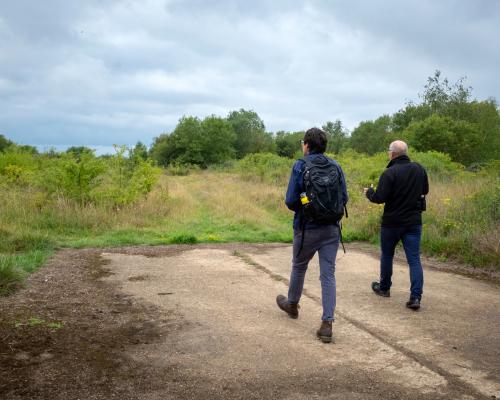
Max Vogel, a 29-year-old public defense attorney, was picnicking with friends in early August at Prospect Park in Brooklyn, New York, when he noticed flashes of light appear in the air around him.
They were fireflies, bioluminescent insects that the Washington DC native had not seen while living in Oregon, where there are few, if any. For many Americans who live where fireflies do, their flashing lights at dusk are a tangible rite of summer – though one that may now be under threat.
While Vogel did not notice their absence out west, once “you’re back on the east coast and you see them, you’re like, that’s so crazy”, Vogel said. “It’s like a shooting star that just is surprising and gives you the childlike wonder of how you felt when you first saw fireflies in your yard.”
Even in areas of the US where there are typically fireflies, people are especially excited to see them this year because there appear to be more this summer after a steady decline in recent years, according to scientists.
Despite that welcome news, researchers caution that it does not necessarily signal a reversal of the downward trend. They remain concerned about the long-term viability of the firefly family, which includes more than 2,000 species, some of which are at risk of extinction due to factors such as light pollution and climate change.
“It’s been really uplifting to hear all of the reports of huge increases in fireflies,” said Candace Fallon, senior endangered species conservation biologist for the Xerces Society for Invertebrate Conservation. “But they are also insects, and insects are notorious for having populations that bounce up and down each year, and so it’s hard to say that their populations are increasing from a single year of data.”
Fireflies, also known as lightning bugs, are beetles that come out at night during summer and produce a bioluminescent gleam, primarily to attract a mate.
Cultures around the world treasure the bugs, including in Japan, where they are symbols of love and fallen soldiers.
Since ancient times, people have also collected them, venturing out with receptacles on hot, sticky nights. In addition to providing a source of entertainment, people have also collected them for scientific purposes and profit.
“Catching fireflies is a relatively harmless thing that you can do that really connects you to your natural world,” said Matt Schlesinger, chief zoologist with the New York Natural Heritage Program, which is participating in a project to identify which firefly species occur in state parks.
Scientists in the US and Canada do not have baseline data on firefly species, which makes it difficult to quantify how much the population has decreased, and they must instead rely on anecdotal reports and documented habitat loss, which point to a downward trajectory, Fallon said.
She and other researchers conducted a study published in the journal PLOS One which found that 18 species in North America are threatened with extinction. But the scientists also did not have enough data on more than half of the assessed species to determine their extinction risks, which means that more of the beetles could be in danger, Fallon said.
The primary factor behind fireflies’ decline is habitat loss and degradation, according to the Xerces Society. That includes land being disrupted by development, light pollution and pesticide use.
Artificial lighting at night makes it hard for the bugs to communicate and mate, Fallon said.
Climate change, including an increase in droughts and rising sea levels, also affect firefly populations, she said.
Still, there are some firefly species that appear to be doing “just fine”, Schlesinger said.
The kinds that specialize in particular habitats, like the big dipper firefly often found in suburban back yards, are the ones struggling, Schlesinger said.
Scientists say the lightning bugs’ apparent revival is probably due to increased rainfall this year.
“If they can still have a big year, at least those species are probably doing fine and have the potential to recover,” Schlesinger said. That said, “any single year doesn’t tell you about the long-term trajectory of firefly populations, just like any particular year that is colder doesn’t mean that global warming isn’t happening.”
Riley Witzl, five, was still able to find some in a St Louis suburb.
“It was fun,” said Riley, who is entering kindergarten. “I liked chasing them and holding them.”
Kids should continue the tradition of venturing out with jars in the summer but should then release the bugs rather than collecting them, Schlesinger said.
Other ways to help fireflies survive include: not using pesticides, reducing artificial lighting at night, and allowing the grass to grow long and the leaves to pile up in your yard.
“A lot of fireflies pupate in leaves, and so when we rake those and put them in bags, we’re destroying their habitat at a very small scale,” Schlesinger said.
Despite the concerns about extinction, Fallon is encouraged by master gardeners in Arkansas who created a firefly sanctuary, and by lawmakers in Maryland who approved legislation earlier this year which introduces new regulations on what type of lighting can be bought with state funds.
She thinks people are more aware of and concerned about the firefly population decline.
“Charisma is a big part of it; people connect with fireflies,” Fallon said, of why people care about their survival. “I think we have enough time to make a difference. Even small pockets of habitat can be really crucial for these species. But I think we definitely need to assess our priorities and decide: are we going to take action?”







